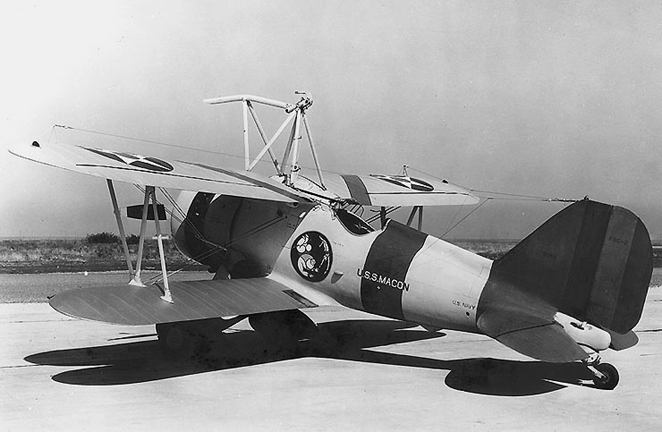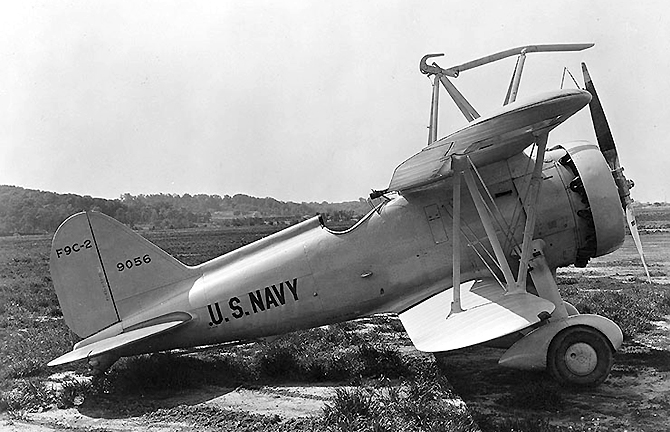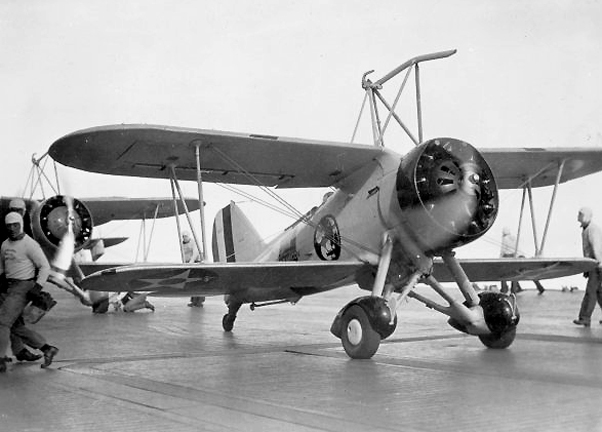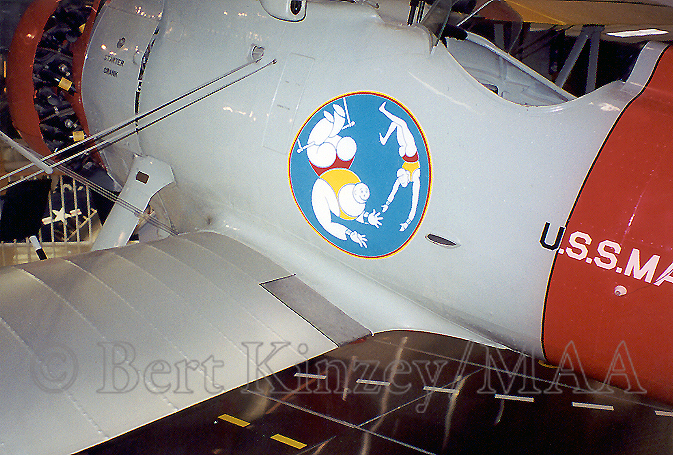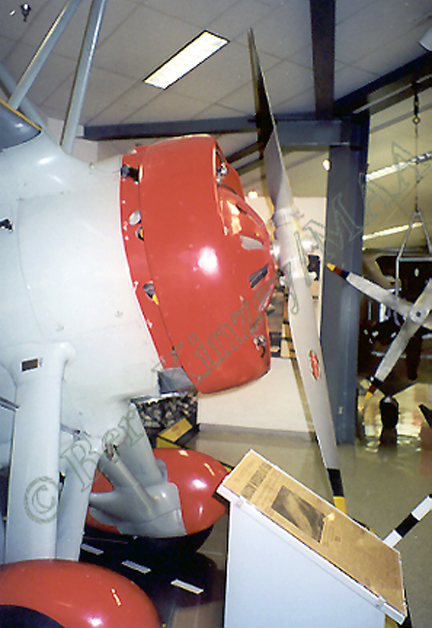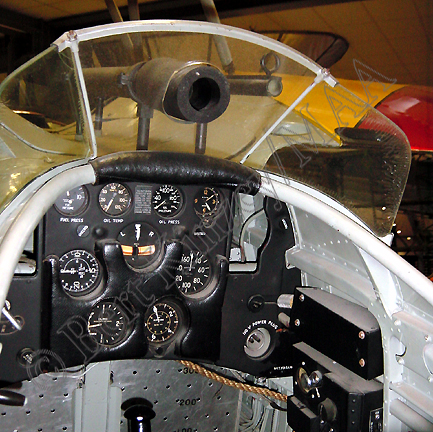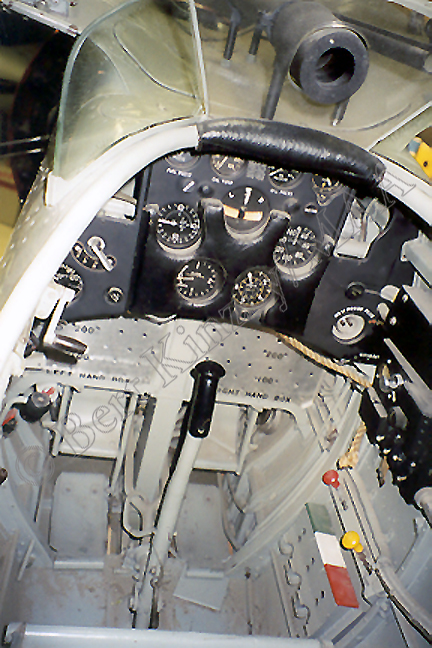The Curtiss F9C Sparrowhawk is one of the most unique and unusual aircraft ever to enter operational service with the United States Navy. Although only eight Sparrowhawks were ever built, they are well known by aviation historians and enthusiasts who have an interest in U. S. Naval Aviation. They became the only fighter type aircraft ever to operate from the Navy’s airships, AKRON and MACON.
These two airships were ordered as ZRS-4 and ZRS-5 on October 6, 1928. One of the design features of these flying aircraft carriers was a hangar bay for up to four aircraft. A trapeze, which would connect to a skyhook on the aircraft, was to be used to launch and recover the assigned aircraft in flight. But the airships and the aircraft to serve in them were not designed with any real coordinating effort to insure compatibility. The trapeze gear, the hangar bay area, and the opening in the underside of the airships were all designed without regard for any particular aircraft or any specified limitations in size for that matter.
Meanwhile, on May 30, 1930, the Navy issued specifications for Design Number 96 which called for a small carrier-based fighter. In response, the Curtiss XF9C-1, the Berliner-Joyce XFJ-1, and the General Aviation XFA-1 prototypes were produced for the competition. During trials at Anacostia in 1931, none of these three aircraft were found suitable for carrier operations. However, it was noted that the XF9C-1 was small enough to fit through the hangar doors on the two airships, and this aircraft was selected for evaluation in this role. The aircraft had a monocoque metal fuselage. The wings and tail section were metal covered with fabric.
There has been some speculation that the Navy’s call for a lightweight carrier fighter as Design Number 96 was secretly intended from the start to be the development of a fighter that would serve aboard the airships, but it was initially called as a lightweight carrier-based fighter for security reasons. This may well have been the case, and it is quite possible that the Navy’s rather strict specifications with respect to size and weight were to insure that the aircraft would be compatible with the airships.
The XF9C-1, BuNo. 8731, was moved to Lakehurst and fitted with a skyhook. Since neither the AKRON nor the MACON was ready for evaluation yet, the airship LOS ANGELES was fitted with an experimental trapeze, and the first hook-up was completed on October 27, 1931.
While this was taking place, Curtiss designers were improving the aircraft. The Wright R-975-C Whirlwind engine, used in the XF9C-1, was changed to a Wright R-975-E3, thus raising the horsepower from 421 to 438. More noticeable was that the engineers raised the top wing by four inches, giving it a noticeable gull configuration. The tail and the landing gear were also redesigned. Test flights of the XF9C-2, BuNo. 9264, began in October 1931, and after approval by the Navy, six production examples of this improved design were ordered under the designation F9C-2. These were assigned BuNos. 9065 through 9061.
The first F9C-2 made its initial flight on April 14, 1932, and on June 29th of that year, the first hook up to AKRON was made. All six Sparrowhawks were soon operating with the airship, but this did not last for long. AKRON was lost in a crash the following year, but fortunately none of the F9C-2s were aboard when the crash took place.
The six Sparrowhawks were transferred to MACON, and once aboard the airship, the landing gear was sometimes removed to increase performance. However, this forced the aircraft to return to the airship rather than to land on a runway in the event of an emergency involving the fighter or the airship. Two years later, MACON was also destroyed in a crash at sea. This time, four F9C-2s were in the airship’s hangar bay and were lost as well. For a short while, the two remaining F9C-2s, along with the XF9C-2 continued in service as utility aircraft before being retired.
DATA (F9C-2)
Engine: Wright R-975-E3 producing 438 horsepower
Maximum Speed: 176.5 miles-per-hour at sea level
Service Ceiling: 19,200 feet
Standard Range: 297 miles
Maximum Range: 507 miles
Span: 25 feet, 6 inches
Wing Area: 172.8 square feet
Length: 20 feet, 1.5 inches
Height: 10 feet, 7 inches
Maximum Weight: 2,888 pounds
Gross Weight: 2,779 pounds
Empty Weight 2,117 pounds
Fuel: 60 gallons internal + 30 gallons external
Armament: 2 fixed .30-caliber machine guns mounted in the cowling
Historical Photos:
This set consists of thirty-two detail photographs of the F9C-2, BuNo. 9056, which is part of the collection of the National Air & Space Museum. All of these photographs were taken by Bert Kinzey when the aircraft was on loan to and displayed at the National Museum of Naval Aviation at Pensacola, Florida. It has since been returned to the National Air & Space Museum. The F9C-2 is beautifully and accurately restored. It is essentially complete except that the two cowl-mounted machine guns are not present.




